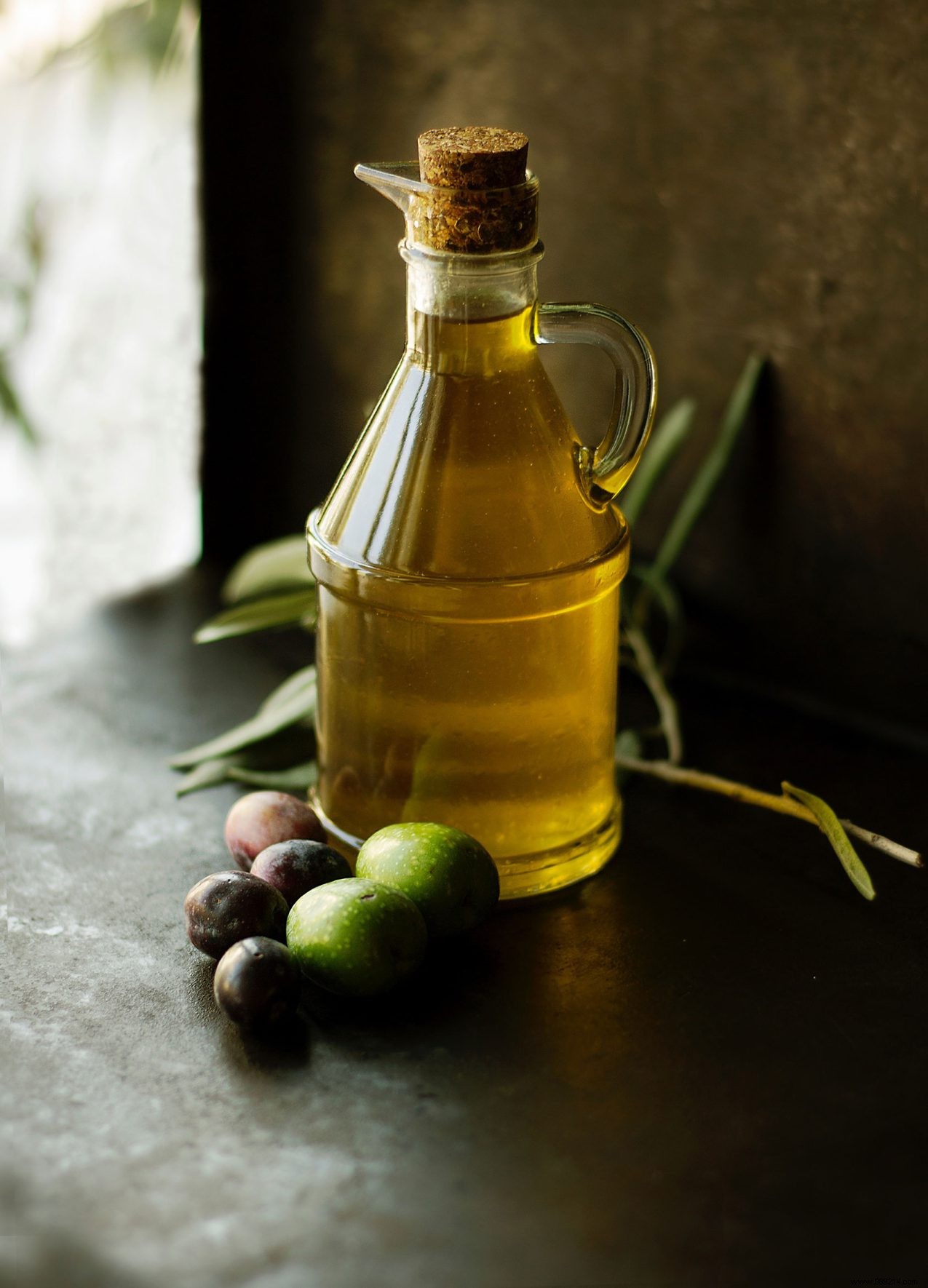
How do you recognize a good olive oil? What does the color, the smell and what does the label say? And does olive oil really always have to be that expensive, or can a cheaper olive oil be good too?
Together with the Dutch olive oil sommelier Wilma, we help you choose a good olive oil. Wilma has completed a 4-year training and so she knows exactly what to look for when choosing an olive oil.
The color of the bottle and the label
The first thing you do to check whether it is a good bottle of olive oil is not very different from choosing a bottle of wine:you read the label. The color of the bottle also betrays the quality. Is the olive oil in a clear light bottle? Do not buy. Light, air and time are the worst enemies of olive oil. So olive oil should be in a dark bottle.
What date is on the bottle?
More and more 'bad' producers know that olive oil should be in a dark bottle. So then you look at the label; a good olive oil mentions 'extra virgin', the country - or preferably even the region - of origin and the best before date. But even then you are not sure, because olive oil only gets an expiration date when it is taken from the tank into the bottle. And it may have been in the tank for a long time. So if there is a harvest date on the bottle, at least you know that you are buying "fresh" olive oil.
This is what the price says
Then look at the price. It takes approximately between 5 and 15 kilos of olives for 1 liter and 1 tree generates between 10 and 15 kilos of olive oil. Half a liter for less than 10 euros? Then it cannot be good quality or it is old harvest. And unlike wine, olive oil doesn't get better with time. So don't keep your opened bottles of olive oil for too long, but use up the olive oil.
The color of the olive oil Contrary to popular belief, the color of olive oil tells you nothing about the taste. It is a myth that greenish oil is better than yellow, because the color says nothing about the quality.
The smell of the olive oil
If you can smell the oil, you certainly won't buy a bad one. Your nose will immediately detect if an olive oil is not good. A foul odor is easy to spot. Just think of the smell of old grease, spoiled salami or sports clothes that you only take out of your bag after a week. Old olive oil or olive oil that is stored in a too warm, bright place will lose its smell and taste. A good olive oil smells fresh and grassy.
Take a taste test If you tend to clear your throat or cough after tasting, then the quality is good. The sharper olive oil tastes, the healthier it is. A mild olive oil has fewer polyphenols than a sharp one, which has to do with the number of antioxidants it contains. You can taste that difference.
Want to know more about olive oil? Olive oil:the reference book (€25.99 – Lannoo Publishers) by Wilma van Grinsven-Padberg will be available this month. The book about olive oil, including surprising recipes.
Roberta Sorge